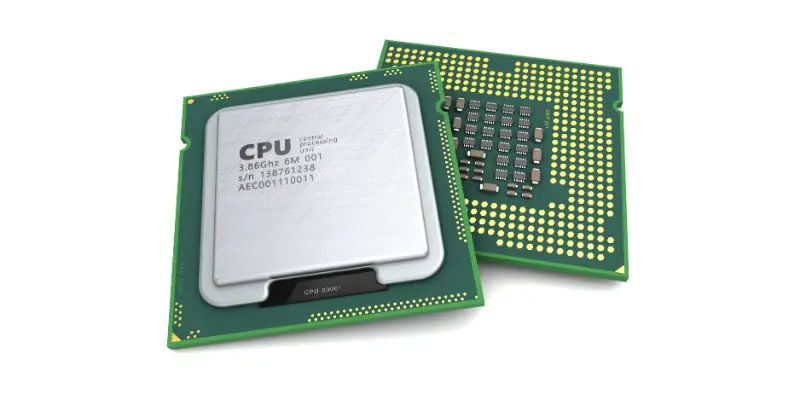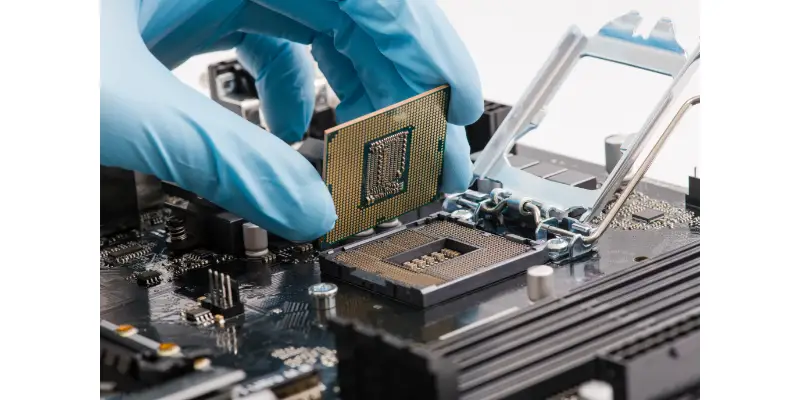Disclaimer: This post may contain affiliate links, meaning we get a small commission if you make a purchase through our links, at no cost to you. For more information, please visit our Disclaimer Page.
Is your CPU overclocking and you don’t know how to stop it?
To stop a CPU from overclocking, you have to reverse all the initial changes you made in your system settings. You can do this by entering the BIOS menu on your computer, which is the same route you use to overclock your CPU. Afterward, return all the settings to normal.
Table of Contents
How Do You Overclock a CPU?
Overclocking is the process where you make your CPU (central processing unit or processor) operate at a much higher rate than the default value set by the manufacturer. This rate or speed is what we call “clock speed”.
So, for instance, if the label on an Intel processor says 3 GHz, this is the standard clock speed set by the Intel company. But usually, this is a conservative estimate of the CPU’s maximum capacity that is there so you do not push the processor too much.
Now, if you were to run this same processor at 3.4 GHz, the processor is now “overclocking”. And you can achieve this by changing both the CPU core ratio and CPU core voltage settings, both of which are accessible via the BIOS menu.
Alternatively, many modern computers, such as those from Alienware, will have a default option in their BIOS menu. With it, you can directly enable or disable a processor’s overclocking feature.
How to Stop CPU From Overclocking?
Now that you know how to overclock in the first place, you can easily understand the method to stop or disable it.
Entering the Bios
First, you have to enter the BIOS option or the UEFI (for the later generations of Windows).
To access the BIOS menu, you need to press a certain key during the boot-up (starting) process. Usually, you will see a message displaying what key you need to press such as “Press DEL to enter setup” or something similar. Common keys for entering BIOS are DEL, F1, F2, etc.
To access the UEFI screen, follow these instructions:
- Hold down the “shift” key and then select restart from the power button option. The computer will restart and present you with a special screen with different options.
- Go to “Troubleshoot”
- Next, to the “Advanced Options” tab.
- You will find the option for UEFI settings.
Method 1
If your computer has a direct option that you can use to turn the overclocking feature on and off, you can use this method.
- In the BIOS (or UEFI) menu, go to the “Advanced” tab.
- Go to “Performance”.
- Look for an option that specifies overclocking or something similar.
- If it is enabled, which should be the case if your CPU is overclocking, then disable it.
- Save the settings and press “YES” to any confirmation dialogue box.
- Exit the BIOS menu and restart your computer system.
Method 2
Now, even if your computer does not have a direct option for you to try, there is still a way. Once again, you need to go to the BIOS menu to achieve this.
- In the BIOS menu, you will see an option for “CPU core ratio” where you will see each of the individual cores and how they are running. Reverse all the changes made here back to their normal settings.
- The “CPU core voltage” option determines the amount of power being supplied to the CPU to sustain overclocking. Return this to normal as well.
- You can also select the “restore fail-safe defaults” option and return all the settings back to their factory standard.
- Reverse any changes you made to the FSB frequency settings. In older models, you could get away with overclocking without changing the FSB frequency. But in most modern computer systems you have to.
- Save the changes.
- Exit the BIOS menu.
- Restart your PC.
If you followed these instructions carefully and made all the changes, your PC should hopefully be back to normal. If not, think about consulting with a technician or your supplier to get more detail.
How to Know if CPU Is Overclocked?
There are a couple of ways you can be sure that your CPU is being overclocked. And it is important to make sure of this. Overclocking for too long can lead to serious issues so it will be bad if this happens without you knowing about it.
Check the BIOS settings
Similar to stopping the whole process, you can get an idea of your CPU’s current status by checking the BIOS menu.
In the BIOS screen, you will be able to view just how much power your CPU is consuming and how much output it is exerting. If you find any of these values to be in excess of the standard, you can be sure that the CPU is currently in overdrive. In particular, check the CPU core ratio and voltage settings and look at their current values.
Using a Freeware
CPU-Z is a free-to-download program that allows you to check how fast your CPU is currently working. By looking at the speed, you can gauge whether your system is in overclocking mode or not.
- Download and install the CPU-Z software.
- Run it as an administrator.
- If your PC is overclocked, it will show that the CPU speed is much higher than the default value.
Is Overclocking Dangerous?
Overclocking is a widely debated topic among PC owners. Some are for this and build their computer in a way that enables them to overclock their hardware very easily. Others are more hesitant as to the potential risks. And there are some significant risks involved.
First, not all CPUs are built the same way. So, not every CPU can handle the added stress and power surge needed to run on overclocking. This could easily ruin your computer very quickly.
The bigger point of concern is the extreme amount of heat the CPU generates, especially if the cooling system is poor.
When you run your computer at the normal, recommended clock speed, it still generates a dangerous level of heat. Hence, why cooling systems are so essential.
But when you overclock the system, everything goes into overdrive. The system consumes much more power and generates so much more heat. And if your cooling system cannot handle this much heat, your CPU will get fried in an instant.
Many companies actually prohibit overclocking their system. If you try to overclock the CPU, you may end up voiding the warranty for your computer entirely.
This can be a big setback particularly if the overclocking does not significantly improve performance.
And that is another aspect you have to look at. Just because you overclock your hardware does not guarantee that you will receive improved performance levels.
Your computer’s capabilities depend more than just a single component; it could be that component already working to its maximum.
Can You Break a CPU By Overclocking?
Overclocking your CPU without the proper configuration or doing it for too long, can result in a damaged and broken CPU especially if it’s used.
Overclocking requires a lot of power and generates plenty of heat. If the power supply or cooling system is inadequate or if the configuration is incorrect, it can lead to an unstable state.
If you are not careful, the internal circuitry of the CPU may get damaged before you realize anything.
Also, leaving the CPU in an overclocked state is something you should avoid. Otherwise, you may damage your processor permanently and you will only realize this the next time you use your PC.
Conclusion
Overclocking can be beneficial if you want more power without expending too much. But you should also be adept with this process and know its risks before you try it for yourself.


